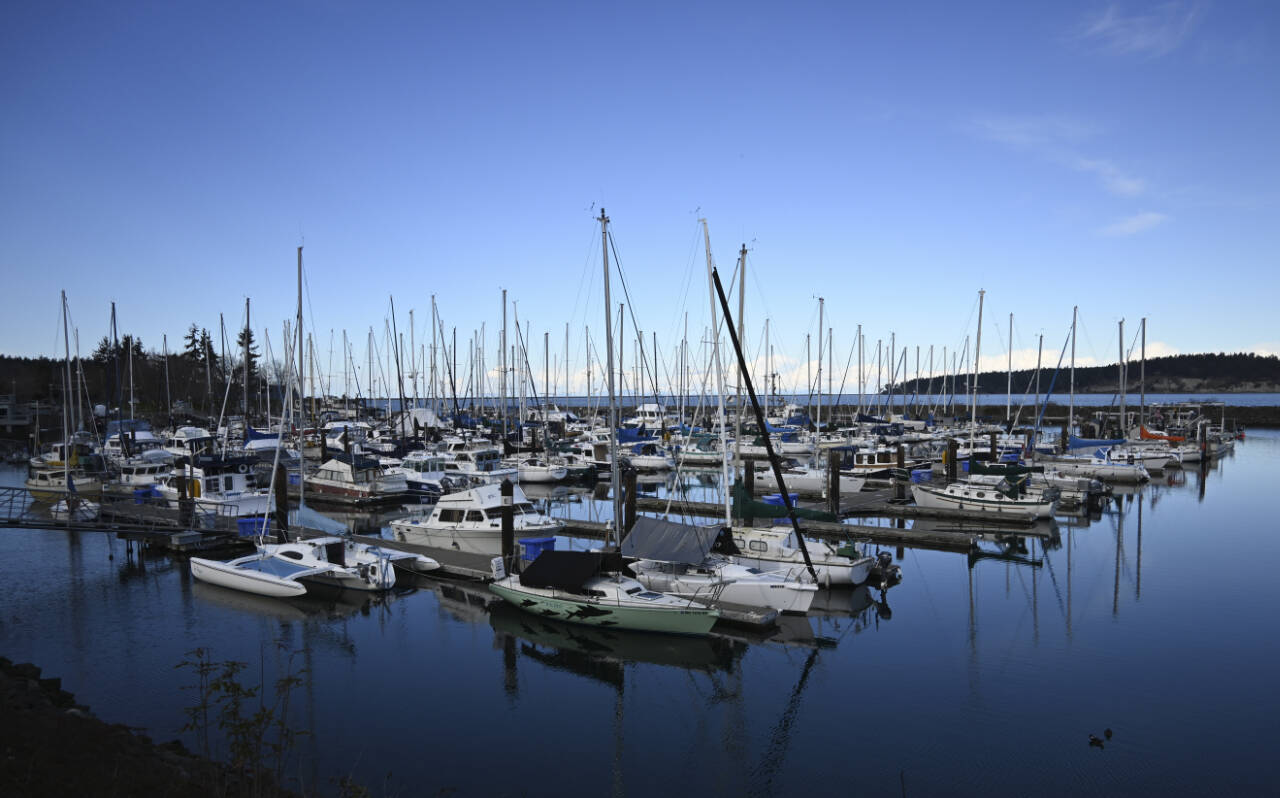A plan is in the works to replace the aging fuel delivery system at John Wayne Marina that is past its useful life, Port of Port Angeles public works and facilities manager Wilson Easton told commissioners.
The system installed in 1984 poses a risk to the environment from a potential leak and the flow of fuel is “painfully slow,” Easton said on Feb. 13, adding “it does need to get done quickly as we can.”
The project would involve replacing the old pipe and fittings with a single double-walled fuel pipe running from the gangway to the dispenser areas.
Easton said the estimated cost of replacing the fueling system is $215,000. A cooperative purchasing agreement with Sourcewell that offered a 10 percent discount would save time and money and help expedite the project.
A line item for replacing the marina’s fuel system was not submitted in time for the 2024 capital budget, but the $100,000 the port had allocated for the project in its 2023 budget is still available, executive director Paul Jarkiewicz said. Staff will bring a recommendation to the board at its Feb. 27 meeting on how to transfer those funds.
Marine Trade Center
Phase 2 of the Marine Trade Center development is ready to go out to bid, Director of Engineering Chris Hartman said. Construction at the 18-acre site will include installation of utilities (communication, power, sewer, stormwater and water), asphalt and concrete paving and site grading.
Bids will be accepted through March 26, and after a low bidder is selected, staff will bring a recommendation to commissioners for review and approval at their April 9 meeting, Hartman said.
The port received a $7.282 million grant from the U.S. Economic Development Administration for development on the site of the former PenPly mill.
Phase I of the project, construction of the waterfront vessel wash-down facility, was completed in 2019.
The port allocated $10.060 million in its 2024 capital budget for Phase 2 construction, construction administration and bid preparation. The EDA grant will fund $6.732 million of the project and the port will pay $3.5 million.
Tariffs
Commissioners reviewed updated port tariffs that will take effect March 15 and reflect a 6 percent across-the-board increase in dockage, wharfage, handling, services and facilities, storage and equipment rentals.
Jarkiewicz said the new rates are based on the consumer price index and a review of current tariffs at ports in Anacortes, Bellingham, Everett, Grays Harbor, Northwest Seaport Alliance (Seattle and Tacoma), Olympia and Columbia County. The rates at those ports will likely increase by a CPI of 4.43 percent this year, he said.
Nonetheless, the Port of Port Angeles remained in the middle to upper tier in terms of pricing.
“As we increasingly become the top of the pack as far as cost for these services, we don’t compare well with some of the other ports in the area,” he said.
Commissioner Colleen McAleer asked if ports with lower rates than Port Angeles generated enough revenue through tariffs for replacement costs.
Jarkiewicz said rather than relying on tariffs, ports are focusing on building their business through existing assets like terminal rentals, attracting industry and creating efficiencies in their operations.
Grays Harbor had made upgrades, for example, to create storage and holding areas for cargo — like logs — near vessels.
“This is something that we’ll need to discuss, which is what are we going to do to remain competitive,” Jarkiewicz said.
Also at the meeting, commissioners heard presentations from the Community Boating Program’s chair Randy Volker and junior sailing director Eric Lesch about the growth of that program and from Lisa O’Keefe, commodore of the Sequim Bay Yacht Club.



